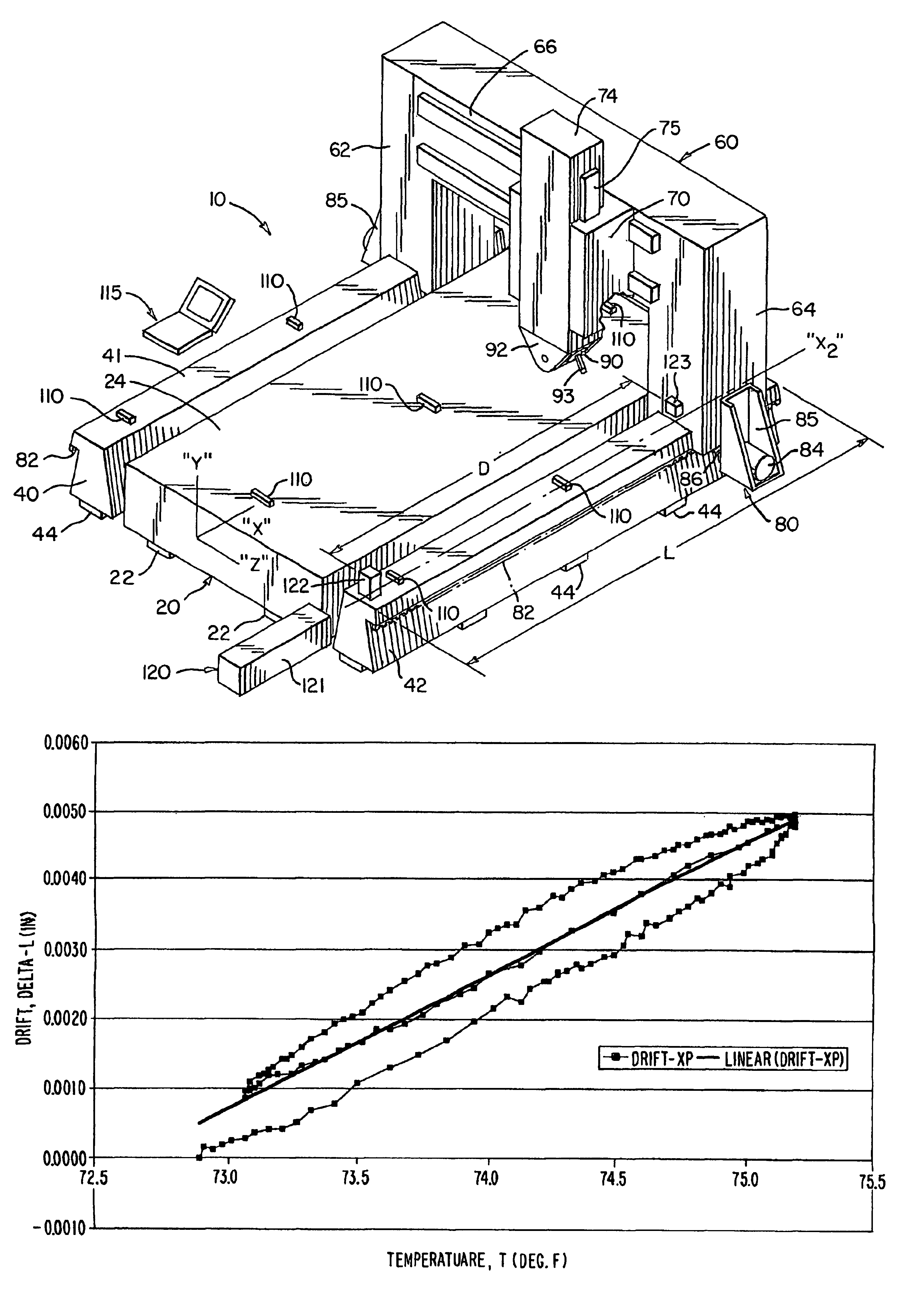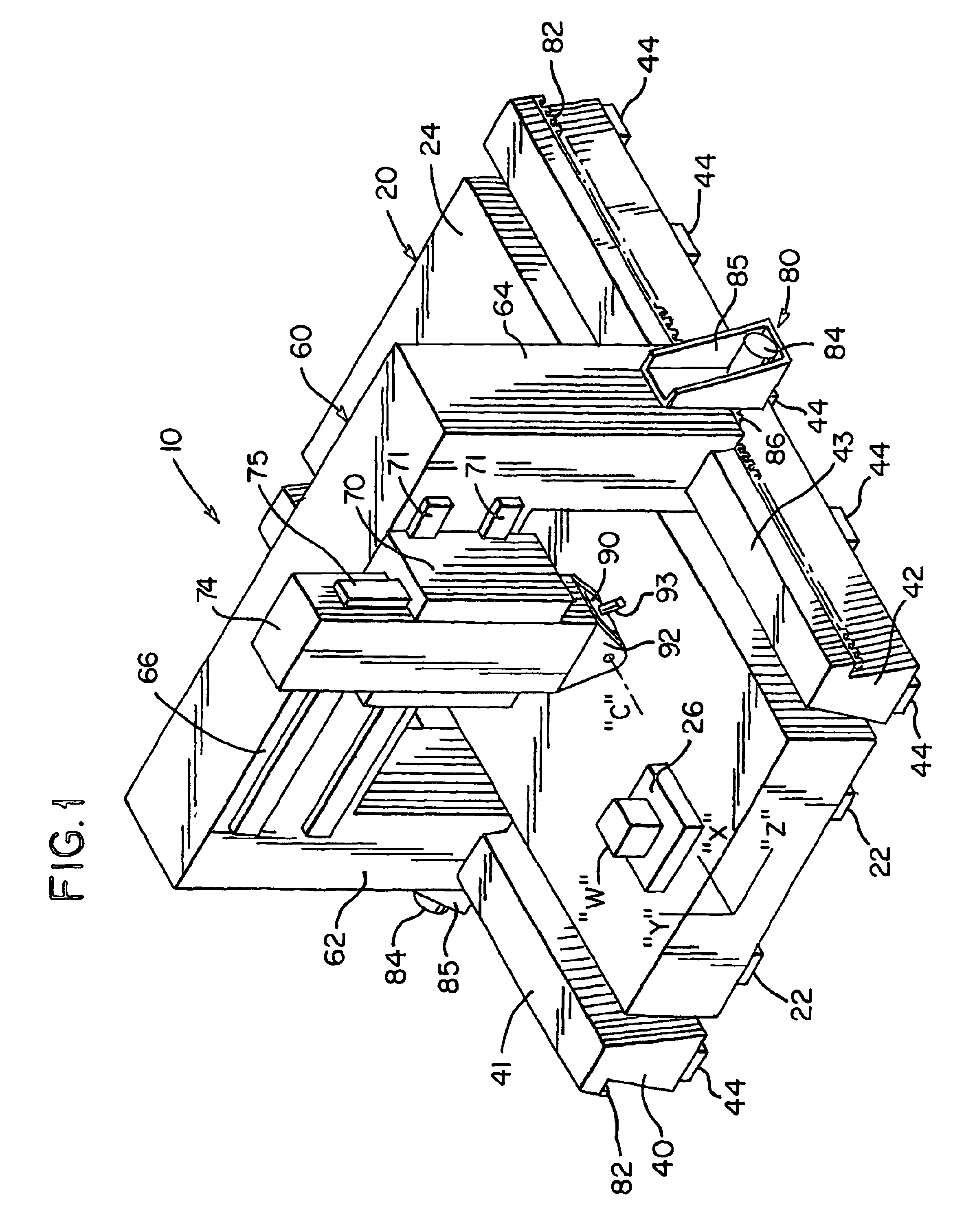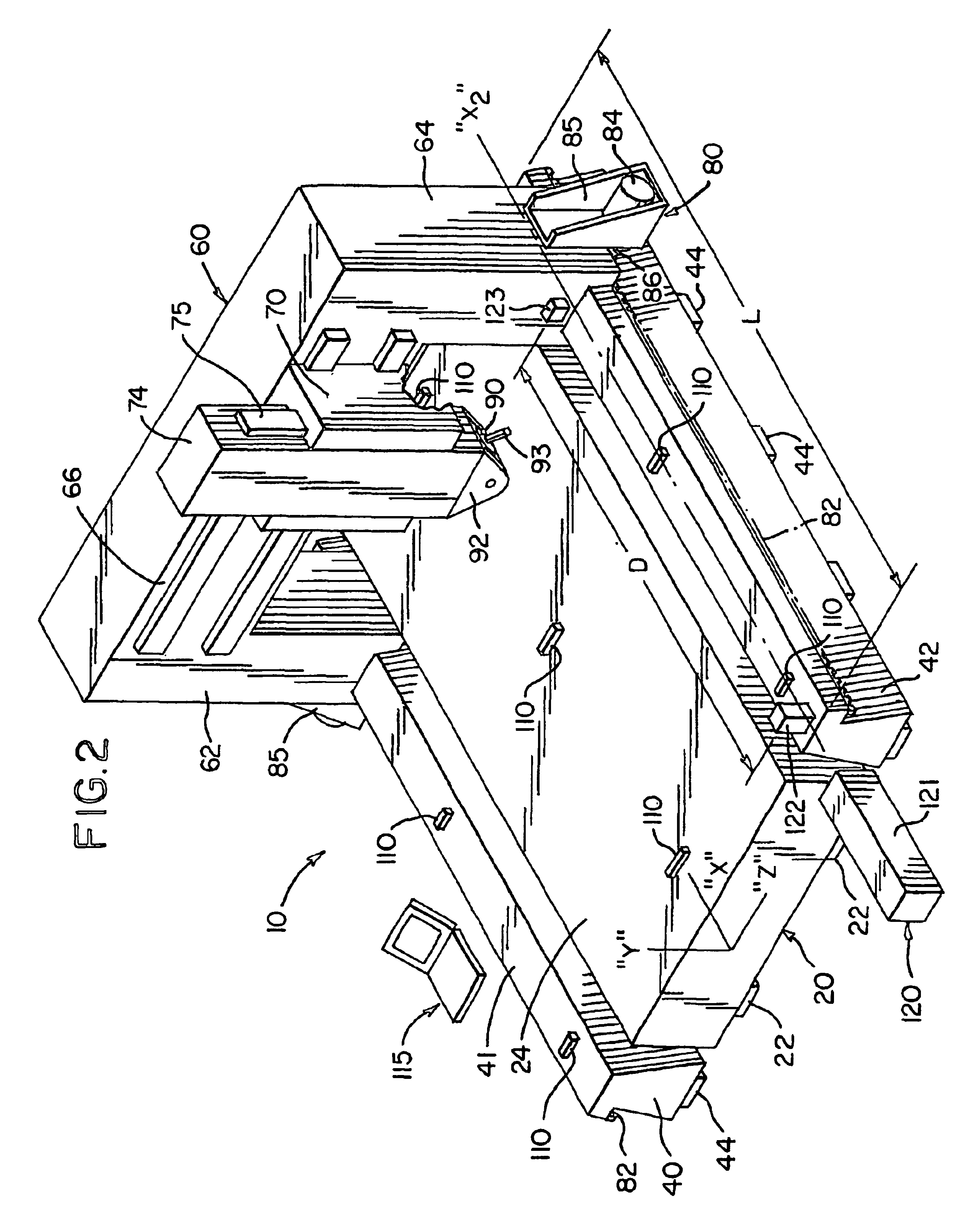Method for determining effective coefficient of thermal expansion
a technology of effective coefficient and thermal expansion coefficient, which is applied in the direction of material heat development, program control, instruments, etc., can solve the problems of significant dimensional machining errors, inaccuracy of calculations, and non-uniform expansion of the machin
- Summary
- Abstract
- Description
- Claims
- Application Information
AI Technical Summary
Benefits of technology
Problems solved by technology
Method used
Image
Examples
Embodiment Construction
[0034]with reference to FIG. 1, a gantry-style machine tool 10 (sometimes referred-to herein as a “profiler” machine) includes an elongate bed 20 resting on pads 22 and being anchored to the machine shop floor, such as, by structural bolts (not shown), connecting the bed 20 to the floor through the pads 22. A lengthwise direction of the bed 20 defines an “X” axis thereof. The bed 20 preferably is constructed from a single piece of structural steel (as shown) having a substantially continuous planar work surface 24 which is machined to have a flat, uniform finish. Alternatively, the bed 20 may be constructed from a plurality of sections (not shown), in which case the sections are connected to one another to form the work surface 24.
[0035]A workpiece-holding device 26 is securely affixable to the work surface 24 at any number of a plurality of locations thereon and is adapted to securely hold a workpiece “W” thereto. Alternatively, the workpiece “W” may be securely affixed to the work...
PUM
 Login to View More
Login to View More Abstract
Description
Claims
Application Information
 Login to View More
Login to View More - R&D
- Intellectual Property
- Life Sciences
- Materials
- Tech Scout
- Unparalleled Data Quality
- Higher Quality Content
- 60% Fewer Hallucinations
Browse by: Latest US Patents, China's latest patents, Technical Efficacy Thesaurus, Application Domain, Technology Topic, Popular Technical Reports.
© 2025 PatSnap. All rights reserved.Legal|Privacy policy|Modern Slavery Act Transparency Statement|Sitemap|About US| Contact US: help@patsnap.com



